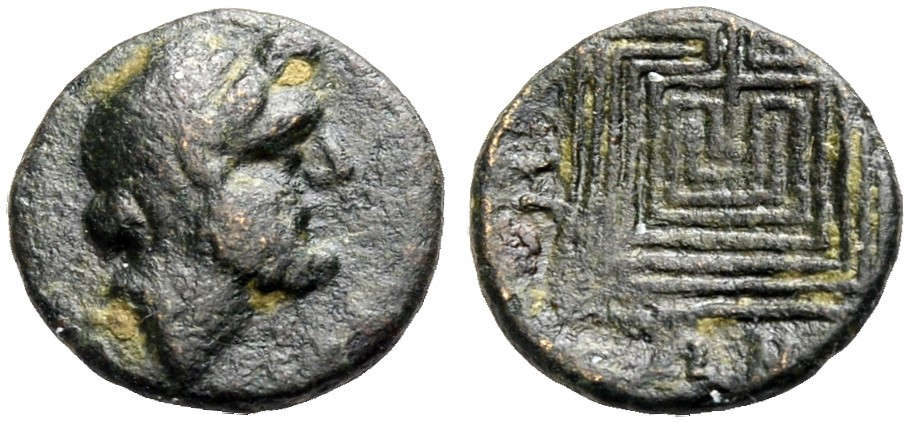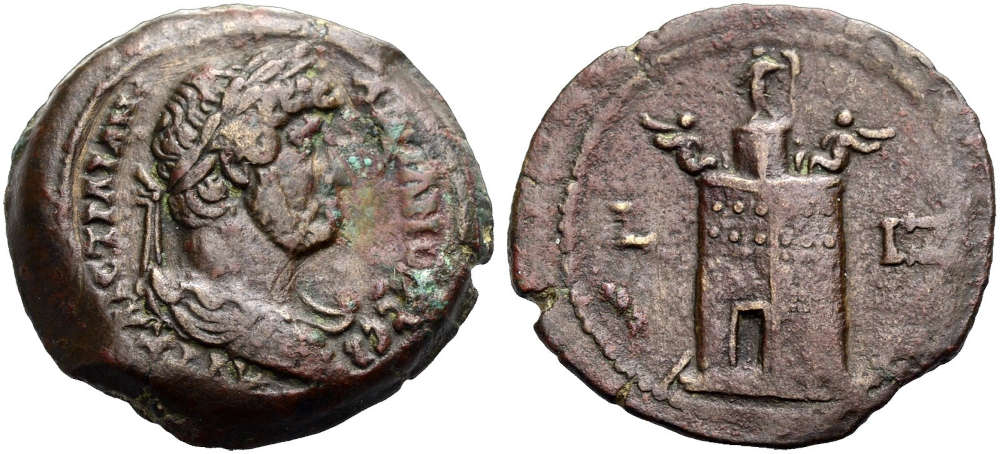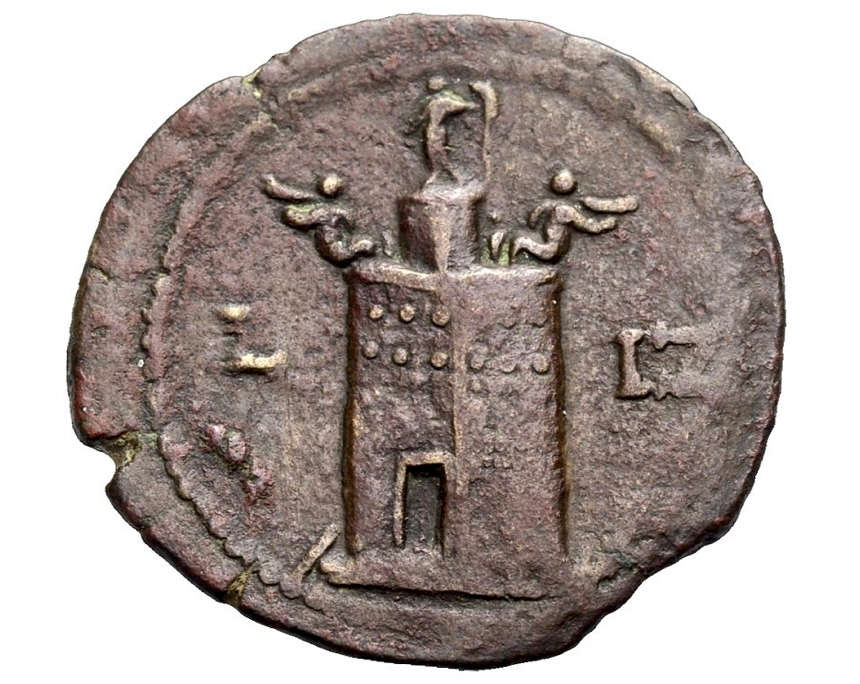Auction 51 at Münzen & Medaillen
Münzen & Medaillen GmbH
Auction 51
Coins
4 December 2024
Online
Münzen & Medaillen GmbH, in Weil am Rhein, Germany, will hold their 51st auction on 4th December 2024. As usual, the auction contains many interesting ancient, medieval and modern coins.

Lot 421: Kreta. Knossos. Bronze. Very fine. Starting price: 120 EUR.
It begins with a wide selection of ancient Greek coins, including many Sicilian silver coins and bronzes. There is a fine Leontinoi Stater from the same dies as specimens in Rizzo, the American Numismatic Society collection and the Antikenmuseum Basel (No. 159), as well as a Sicilian Hemidrachmon signed by the diecutter Euarchidas (No. 227). A copy of Walter Giesecke’s work, Sicilia numismatica, is also on sale in the auction (No. 275). Among other ancient coins are a stater of the Letai or one of the related Thracian-Macedoninan tribes, whose exact identities have been lost in the mists of time (No. 342). There is an interesting bronze from the cult side of Eleusis depicting the hero Triptolemos (No. 393), and a hemidrachmon from Olympia signed by Polykaion (No. 410). Many of the coins come from old family collections from Germany and Switzerland and were acquired fom the Münzen & Medaillen AG, Basel. Particularly popular among collectors is the bronze from Knossos in Crete featuring Daedalus‘ labyrinth, built for King Minos in Knossos, Crete (No. 421).

Lot 698: Egypt. Alexandria. Hadrianus, 117-138. Billon-Tetradrachm, year 17 = 132-133. Very fine. Starting price: 500 EUR.
Among the Roman Provincial coins is a series of Alexandrian coins, with interesting reverses, which were collected in Germany in the mid 20th Century. These include a bronze of Hadrian (No. 698, on the catalogue cover), minted in Year 17 of his reign, and featuring an image of the lighthouse of Alexandria (Pharos) on the reverse. Commissioned by Ptolemy I. and mostly constructed under Ptolemy II. Philadelphus, the lighthouse was dedicated by Sostratus of Cnidus, who was probably the architect. Standing on the island of Pharos facing Alexandria, the renowned ancient monument was once counted as one of the seven wonders of the world. It was depicted on numerous coins, and mentioned admiringly by later travellers to Alexandria, but the tower was frequently damaged by earthquakes, and what was left of the foundations was finally incorporated into a fort built by Sultan Quaitbay in 1480. The lighthouse has continued to fascinate modern historians, archaeologists and adventurers, as well as numismatists, who have the chance to observe it as it once was on coins such as this one.

Lot 759: Imitation of a denarius of Augustus. Silver, ca. 2 BC-AD 4, local mint in Germania. Extremely fine. Starting price: 240 EUR.)
A particularly fascinating coin is the imitation of a denarius of Augustus, No. 759. The obverse and reverse are clearly based on the well known denarii and aurei minted in honour of Augustus‘ adopted grandsons, Gaius and Lucius Caesar, in ca. 2 B.C.-4. A.D. (an aureus is also on sale in the auction, No. 872). The style of the denarius, however, is clearly non-official, with somewhat abstracted portraits and a garbled, unintelligible legend formed from well-formed, but sometimes wrongly positioned letters. Similar coins in German museum collections (e.g. in Freiburg am Breisgau and Berlin) suggest that this is a local imitation from Barbaricum; the coin lies in a cardboard collector’s case from the 19th Century with a handwritten reference to Cohen’s Monnaies sur l’Empire Romain and was acquired from Münzen & Medaillen AG Basel in 1984.
There follows a large selection of Roman coins, including various aurei and some rarities, such as the Sestertius of Diadumenian Caesar, the young son of Macrinus (No. 981), and an unusual coin, at face value an antoninian, of Gallienus (no. 1032), which at 6,50 g. is far heavier than normal. The flan is evidently mostly bronze, with some traces of silvering, minted using ordinary antoninian dies (ANNONA AVG) of the Rome mint. The later Roman coins include a selection of gold solidi. Rarities include a Tremissis of Aelia Pulcheria (No. 1111) and a bronze of the Emperor Johannes (No. 1112). The antique section ends with a selection of Byzantine gold coins.

Los 1326: Stadt Nürnberg. Dukat, 1700 (Chronogramm). Extremely fine. Starting price: 800 EUR.
Among the Medieval and Modern coins are a range of Thalers and other coins from Brandenburg- Franken as well as series from Brandenburg-Bayreuth and Brandenburg-Ansbach. The city of Nuremburg is also represented with a selection of coins including a chronogram-ducat from 1700 (No. 1326) and a variety of Thalers. There are also thalers and other coins from Saxony and a large selection of 19th century gold coins and other coins minted in various German states. There is a trial-piece (Münzprobe) for a Prussian 5 Mark coin with dies from Karl Goetz (No. 1610). Other European coins include gold from Great Britain, Italy, Holland, Poland and Russia, and a Dutch Medaillion by Holzhey celebrating a silver wedding anniversary (no. 1679). The final part of the catalogue offers a selection of coins with depictions of the Nativity of Christ, including a triple Schauthaler of Hamburg (No. 1718).








